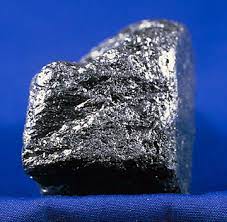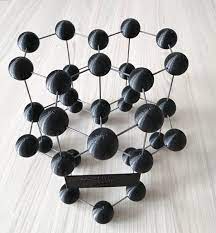Graphite
Graphite is an allotrope of carbon, which means that it is one of its basic forms. It is a specific form of carbon with different properties than the common diamond or amorphous forms of carbon.

The main feature of graphite is its layered structure, which consists of planar crystalline structures called graphene. Graphenes are bound together by weak van der Waals forces and form layers of graphite. These layers peel off easily, making graphene one of the hardest substances in the world.
Properties of graphite:
Conductor of electricity: Graphite is a good conductor of electricity because of the free electrons in its electrical structure. This property makes graphite useful in electronics and electrical engineering.
Soft and lubricating: Graphite is a soft and lubricating material. Its layered structure allows the individual layers to slide easily over each other, making graphite a good lubricating material.
Chemical Resistant: Graphite is resistant to many chemicals and corrosion. Therefore, it is often used in corrosion-resistant containers and pipes.
Thermally conductive: Graphite is a good thermal conductor and has high heat resistance. These properties are used in various high temperature applications.
Use of graphite:
Production of graphite rods and electrodes in industry.
Production of electrical contact surfaces and brushes for generators and electric motors.
Applications in electrical engineering and electronics.
Production of graphite bearings and seals.
Manufacture of pencils where graphite is used to form a solid core.
Production of lubricants and greases.
It is used in nuclear energy and in the production of moderators.
Graphite is a universal material that has a wide range of uses in various industrial and technological applications. Its unique properties make it a valuable material for many industries.

